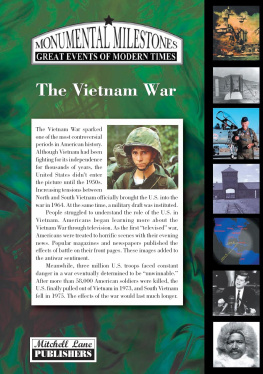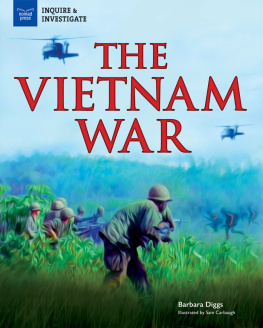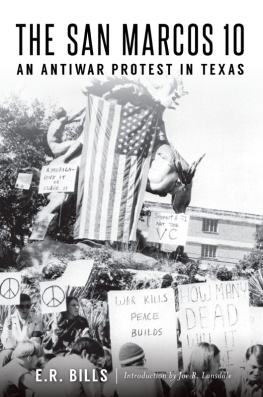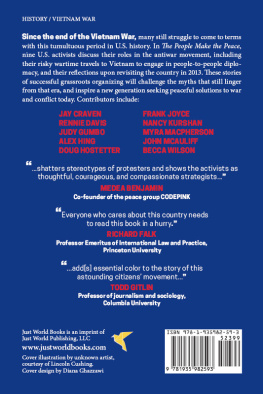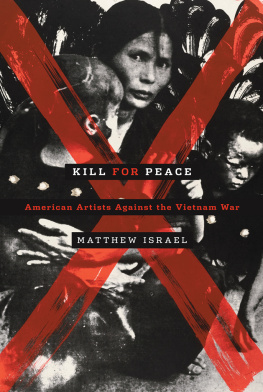Dangerous Grounds
This book was published with the assistance of the Authors
Fund of the University of North Carolina Press.
2017 The University of North Carolina Press
All rights reserved
Manufactured in the United States of America
The University of North Carolina Press has been a member of the Green Press Initiative since 2003.
Cover illustration: Soldiers and civilians at the nations first GI coffeehouse, the UFO in Columbia, S.C., 1968. Courtesy of Lucy Rutledge.
Library of Congress Cataloging-in-Publication Data
Names: Parsons, David L.
Title: Dangerous grounds : antiwar coffeehouses and military dissent in the Vietnam era / David L. Parsons.
Description: Chapel Hill : The University of North Carolina Press, [2017] | Includes bibliographical references and index.
Identifiers: LCCN 2016025852| ISBN 9781469632018 (cloth : alk. paper) | ISBN 9781469632025 (ebook)
Subjects: LCSH: Vietnam War, 19611975Protest movementsUnited States. | CoffeehousesHistory20th century. | United StatesHistory, Military20th century. | SoldiersUnited StatesHistory20th century.
Classification: LCCDS559.62.U6 P37 2017 | DDC 959.704/31dc23
LC record available at https://lccn.loc.gov/2016025852
For Claudia
Contents
Acknowledgments
While researching the history of GI coffeehouses, I benefited tremendously from the intellectual and historical perspectives shared generously by several scholars. Im particularly grateful to Professor Joshua Brown, whose work first awakened me to the possibilities of social and cultural history. My subsequent years working with Professor Brown at the New Media Lab and American Social History Project at the City University of New York Graduate Center continued to broaden my ideas about history, and our conversations always provided me with advice and inspiration that added rigor and passion to my work. Professors Clarence Taylor, Stephen Brier, Gerald Markowitz, and Joshua Freeman also shared critical insights throughout my years at the Graduate Center, without which this book would not have been possible.
I would also like to thank several figures from the coffeehouse movement who were kind enough to share their experiences with me. Barbara Garson, Josh Gould, Howard Levy, and Stephanie Coontz were all generous with their time and patient with my many questions. David Zeiger, a filmmaker and dedicated historian of the GI movement, shared his impressive collection of underground newspapers and related ephemera, located on the website for his film Sir! No Sir!, a collection that became one of the foundational sources for my investigation. Most of all, I would like to thank Fred Gardner, the creator of the GI coffeehouse concept, for sharing his time and garage full of primary sources with me. His friendly participation and unique perspective was enormously helpful for this project.
Several colleagues, friends, and family members provided endless enthusiasm and support for my project over the years. In particular, my frequent conversations with Claudia Moreno Parsons and Justin Rogers-Cooper regularly challenged my assumptions and brought fresh viewpoints. And I want to thank my parents, Jim and Linda Parsons, for their unconditional support and belief in me throughout my years of education.
Finally, Im eternally indebted to my wife, Claudia, whose motivation, inspiration, and love helped me immeasurably in writing this history.
GI Coffeehouse Locations, 19681974
Chicago Area Military Project (Chicago, Illinois)
Covered Wagon (Mountain Home, Idaho)
Echo Mike (Los Angeles, California)
Fellowship of the Ring Coffeehouse (Fairbanks, Alaska)
First Amendment Coffeehouse (Frankfurt, Germany)
Fort Dix Coffeehouse (Wrightstown, New Jersey)
Fort Jackson GI Center (Columbia, South Carolina)
Fort Knox Coffeehouse (Muldraugh, Kentucky)
FTA Project (Louisville, Kentucky)
Green Machine (San Diego, California)
Haymarket Square Coffeehouse (Fayetteville, North Carolina)
Hobbit Coffeehouse (Iwakuni, Japan)
Homefront (Colorado Springs, Colorado)
Left Flank (Milwaukee, Wisconsin)
Liberated Barracks GI Project (Kailua, Hawaii)
Oleo Strut (Killeen, Texas)
Pentagon GI Coffeehouse (Oakland, California)
Peoples Place (Chicago, Illinois)
Potemkin Bookshop (Newport, Rhode Island)
Shelter Half (Tacoma, Washington)
UFO (Columbia, South Carolina)
Dangerous Grounds
Introduction
Although more than forty years have passed since its official end, the Vietnam War continues to occupy a prominent place in the collective American psyche. The word Vietnam exists as a kind of shorthand, regularly invoked to stand in for a whole range of lessons, moral platitudes, and political opinions. Despite its dominant place in public discourse, though, the meaning of the Vietnam War remains fundamentally unsettled, its legacy unclear, its lessons and politics as divisive as ever. Decades of public revisionism and Hollywood mythmaking have helped create a series of enduring misconceptions about the eras history.
One particularly misunderstood subject is the movement against the war. Major histories of the antiwar movement, along with popular movies and television programs, have focused most of their attention on the rise and fall of the New Left on college campuses. The typical stars of this story are the idealistic young radicals of organizations like Students for a Democratic Society, one of the leading campus antiwar groups of the era. In the wars early years, Students for a Democratic Society and similar organizations staged some of the nations first major peace demonstrations on college campuses around the country. The student movements historic significance is undeniable, but its disproportionate place in public memory obscures the wider history of antiwar activism in the Vietnam era. In reality, of course, antiwar sentiment was not limited to Students for a Democratic Society and other campus groups. Especially in the wars later years, as a majority of Americans came to oppose
A related and equally persistent mythology about the antiwar movement concerns its relationship to American soldiers. Aided by the distortions of conservative politicians from Ronald Reagan to George H. W. Bush to Sarah Palin, along with their supporters and enablers in the news media, the image of angry protesters disrespecting American soldiers has become firmly lodged in American culture. Popular movies like First Blood (the first in the Rambo series), Hamburger Hill, Forrest Gump, and many others feature patriotic GIs pitted against vindictive and ungrateful antiwar activists. These words and images, repeated endlessly, have produced one of the wars most enduring cultural legends: that antiwar protesters regularly spit on and antagonized uniformed soldiers upon their return from service in Vietnam. The image has become a critical element in a revisionist narrative of the war, invoked in public discourse as proof that the antiwar movements divisive behavior demoralized our soldiers and helped lose the war. The spitting story and related myths trade on false stereotypes of both activists and soldiers, and their continued cultural currency clouds our understanding of the interaction between antiwar politics and the U.S. military.
This book challenges these misconceptions by presenting a more detailed picture of the relationship between the civilian antiwar movement and American soldiers during the Vietnam years. The books central focus is a network of GI coffeehouses that opened outside a number of American military bases around the country between 1968 and 1974. The GI coffeehouse network was funded and operated by a wide range of organizations and individualsboth inside and outside the American militarywho opened more than twenty different antiwar coffeehouse projects throughout the Vietnam War era. Beyond creating comfortable, counterculture-themed hangouts for GIs, the coffeehouses served as resource centers and organizational bases for the growing movement of active-duty soldiers organizing against the war.


